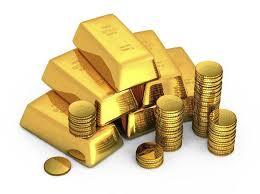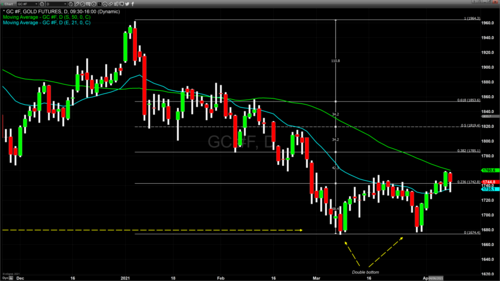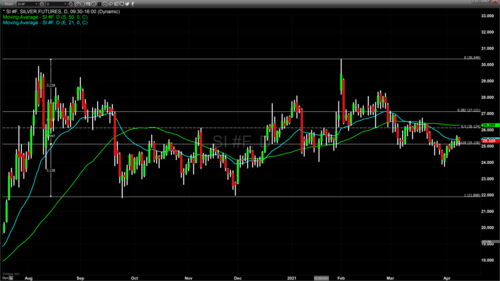
Gold futures retrace much of this week’s gains
Gold futures basis the most active June 2021 Comex contract is currently fixed at $1744.10, after closing yesterday at$1756.50, the highest price since February 26. Gold futures basis the most active June 2021 Comex contract lost $14.10 in trading today.

Dollar strength was a minor component in today’s price decline. Today the dollar index gained 0.111 points or 0.12%. The vast majority of today’s decline was attributed to market participants bidding the precious yellow metal lower. Interestingly this was the exact opposite of yesterday’s price gains with the majority of gains due to market participants actively buying that dip and dollar weakness contributing only a fractional component of yesterday’s $14.90 gain.

Silver basis the most active May 2021 Comex contract lost $0.26 today after gaining $0.28 on Thursday. Currently silver futures are fixed at $25.325.
Bitcoin futures which are traded on the Chicago Mercantile continued in their price ascent, gaining $520 today and is currently fixed at $58,675 per coin.
While yesterday’s gains in the precious metals and U.S. equities were a direct result of the minutes released from last month’s FOMC meeting, the minutes underscored the current mandate of the Federal Reserve which has not changed since interest rates were dropped to between 0 and ¼%. Additionally, they continue to add $120 billion per month to their asset balance sheets through purchasing United States bonds and mortgage-backed securities.
The Federal Reserve continues to be aligned with the majority of central banks worldwide, with both the world bank and the Federal Reserve continuing to have an extremely accommodative monetary policy. In fact, on Tuesday the IMF backed the Fed’s decision to be patient and continue to keep interest rates extremely low with the intent of maintaining the current interest rate for years to come.
The International Monetary Fund through the central banks of its member nations continues to its intent to maintain an extremely accommodative monetary policy. In their latest global financial stability report they sent a strong message that there continues to be a need for the current dovish demeanor of central banks worldwide. Both entities are acutely aware that we live in a global economic world in which positive movement in any major country has a spillover effect to other countries and that raising rates too quickly could easily stifle the economic rebound witnessed in the United States and to a lesser extent in Europe.
Chairman Jerome Powell’s statement continues to propose that any rise in inflation is transitory and will be short-lived.
In disagreement, William Watts wrote an article in MarketWatch yesterday. The author spoke about his deep concern that there is the biggest inflation scare in 40 years which will become apparent extremely soon.
“It’s unclear whether inflation will see a lasting comeback, but a booming, stimulus-fed economy rebounding from the COVID-19 pandemic seems all but certain to send some near-term inflationary shock waves through financial markets in coming months.” He cites Christopher Wood, global head of equity strategies at Jeffrey’s in a note written on April 4 that states “there has been a sudden surge in demand following a supply shock which is a classic recipe for a pickup in inflation.”
Of course, if inflation does begin to ratchet up higher it will have an extremely bullish impact on gold and silver because it will devalue the U.S. dollar which has an inverse relationship between the price of those two precious metals. He also warned that investors should be paired for the biggest inflation scare in America on the reopening of the economy since the early 1980s when former Fed Chairman Paul Volcker crushed double-digit inflation by the late 1970s.
Which leads to the question he ponders, which is just how long-lasting will inflationary bout continue? And how the Federal Reserve will respond should that occur? Higher inflation will lead to higher gold and silver prices and have tremendous bearish implications for U.S. equities.
The Fed has also agreed that they will let inflation run hot in lieu of their primary mandate (which is maximum employment) above its former target of 2%. Also, members of the Federal Reserve have stated that they will let inflation run hot for an unspecified amount of time.
Unquestionably upticks in inflation will take gold and silver higher so the question becomes which hypothesis is correct? The analysts or the chairman of the Federal Reserve?
By Gary Wagner
Contributing to kitco.com
The best place to purchase Gold and Silver, Kinesis money System
David